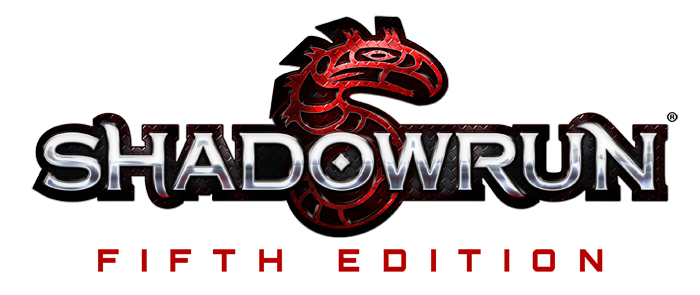In the last development blog about Shadowrun, Fifth Edition, we talked about the concept of limits and how they apply to gear. Limits started as a way to put the focus on skills and attributes to build dice pools, but as we developed the concept, we found other uses and effects for them. This, of course, is one of the blessings and perils of game design—when you make a change on an underlying issue, its effects spiral out in different ways, some expected, some not.
As we were working on limits, we developed two kinds—one tied to gear, and one not. This second type is what we are calling inherent limits, and there are three of them—Physical, Mental, and Social. These are derived from a character’s attributes, which we liked, since it gave us a chance to encourage more balanced characters. Every character has certain attributes that are more important to them than others, and that’s not going to change, but we felt that limits meant that people would have to think a little more about the other attributes, making sure they weren’t ignored so that their limits were not too low.
As we were working on and playtesting limits, we also had to think about possible objections or difficulties with limits. We knew there would be times that players would roll some hits that they would not be able to count, as that’s built right into the design. What was potentially problematic was the Great Roll (yes, it’s important enough to deserve capital letters). Let’s say you’re a hacker in a firefight you didn’t plan to be in. Everyone’s turned off their wireless, and there’s not much Matrix action in the area. You’re running low on options, and to make things worse you’ve been noticed by the big troll tank who is currently rushing at you with thoughts of grinding you into a messy pulp.
In this case we’ll say you have Agility 3, Pistols 3, for a dice pool of 6 (ignoring modifiers for the time being to make this example simple). You didn’t spend on the most accurate pistol on the market, opting for a light model with an Accuracy of 3, since most of the time that’s going to be enough to cover the hits you’ll get when you take a shot. But this time, when the situation is bad, you actually make the perfect roll. Three fives, three sixes. Six hits. With an armored-up troll closing in on you. Beautiful. But you can only use three of them due to the weapon’s limit.
One of our guiding principles is that while we want Shadowrun to be difficult, we also want players to be able to be awesome. So in this instance, we turned to Edge, with a function called Breaking the Limits. The hacker can invoke this ability after the roll of the dice, and then use all 6 hits, hopefully stopping the troll cold (or maybe not—even a great shot with a light pistol doesn’t tend to stop a troll).
The hacker had at least another option if he wanted to plan ahead, as using Edge to add his Edge rating to his dice pool also allows him to ignore limits. Edge, then, becomes more important in Shadowrun, Fifth Edition, which we view as a positive development. Shadowrunners should be living on the edge anyways, so increasing the emphasis on that stats seems like a good thing.
It also comes with a problem, as it’s likely to make Edge diminish quicker than it did in Shadowrun, Fourth Edition. But this was another problem that was actually an opportunity. When looking at ways to change how Edge gets refreshed, we looked at the traditional bonus Karma rewards, for things like good humor, skillful roleplaying, and exceptional daring. We decided that rather than making you wait for a Karma reward for these good decisions, your character could instead be rewarded by an instantly refreshed point of Edge. That brings in positive reinforcement for fun gaming behavior. We hope that this—and many of the other changes we’ll be covering—make the Shadowrun, Fifth Edition roleplaying experience more fun than ever.
Coming up next: A look at Fifth Edition’s Matrix.



25 Comments